
 Centipedes &
Millipedes &
Insects &
Echnioderms &
Fish &
Flatworms
Reptile
Centipedes &
Millipedes &
Insects &
Echnioderms &
Fish &
Flatworms
Reptile
Centipedes
1. Centipedes which belongs o the class Chilopoda. If you have ever turned over a rock on a damp forest foor or kicked a pile of damp, dead leaves, you may have seen the flattened bodies of centipedes wriggling along on their many tiney jointed legs.
2. Centipedes are carnivorous and eat soil arthropods, snails, slug, worms. The bite of a centipede is painful to human, like spiders.Centipedes are typically found in areas of high moisture such as loose bark, in rotting logs, under stones, trash, piles of leaves and grass clippings, flower-bed mulch, etc., where their typical prey is found. Most centipedes are nocturnal or active at night.They occasionally invade structures, especially S. coleoptrata, where they survive on flies, spiders, etc. Although they may be found anywhere in a house, the usual places are damp basements, bathrooms, damp closets, and potted plants.
3. A centipede may have from 15 - 181 body segments always an odd number. Each segment has only one pair of jointed leg.The first body segment has a pir of poison claw that secretes a toxic subtance from a pair of poison glands.
4. Centipedes typically overwinter outdoors in protected situations and lay their eggs, usually in or on the soil, during the summer. Females of Scutigera have been observed to produce 35 eggs over a period of days. The common Scutigera may live for more than a year, other species live as long as 5-6 years
 Centipede
Millipedes
1. A millipede, the so called thousand sand legger, eats mostly plants and dead material on damp forst floors.
2. Most millipedes are scavengers and feed primarily on decaying vegetation and leaf litter, although some species attack roots of living plants. They spend most of their life in the soil where they also overwinter. In the spring, millipedes lay from 20-300 eggs in the soil. The eggs hatch in several weeks, and the young millipedes have only the first three pair of legs and not more than seven segments. With each molt they add additional segments and legs until they reach maturity. Sexual maturity is reached in 2-5 years depending on the species.
3. Eggs are laid in clusters of 20 to 100 in the soil and these hatch in about 3 weeks. Females lay as many as 300 eggs in the summer. The newly hatched young resemble adults but only have up to 7 segments and 3 pairs of legs. They molt many times adding segments and legs.
4. Millipedes feed on organic matter, including decayed plant material such as leaves and wood, and occasionally, living plant roots and rootlets, and developing fruit such as melons (especially cantaloupes) and cucumbers. Affected plants may wilt and die and melons may develop rots caused by bacteria or fungi which are introduced by millipede feeding. If millipedes are abundant in mulches and litter in landscape plantings around homes and other buildings, they often enter through cracks and crevices. Once inside, they usually die unless basements are very moist. Entry into structures is most common after heavy spring rains saturate the soil and drive millipedes to higher ground and in the fall, when they seek hibernation sites.
Centipede
Millipedes
1. A millipede, the so called thousand sand legger, eats mostly plants and dead material on damp forst floors.
2. Most millipedes are scavengers and feed primarily on decaying vegetation and leaf litter, although some species attack roots of living plants. They spend most of their life in the soil where they also overwinter. In the spring, millipedes lay from 20-300 eggs in the soil. The eggs hatch in several weeks, and the young millipedes have only the first three pair of legs and not more than seven segments. With each molt they add additional segments and legs until they reach maturity. Sexual maturity is reached in 2-5 years depending on the species.
3. Eggs are laid in clusters of 20 to 100 in the soil and these hatch in about 3 weeks. Females lay as many as 300 eggs in the summer. The newly hatched young resemble adults but only have up to 7 segments and 3 pairs of legs. They molt many times adding segments and legs.
4. Millipedes feed on organic matter, including decayed plant material such as leaves and wood, and occasionally, living plant roots and rootlets, and developing fruit such as melons (especially cantaloupes) and cucumbers. Affected plants may wilt and die and melons may develop rots caused by bacteria or fungi which are introduced by millipede feeding. If millipedes are abundant in mulches and litter in landscape plantings around homes and other buildings, they often enter through cracks and crevices. Once inside, they usually die unless basements are very moist. Entry into structures is most common after heavy spring rains saturate the soil and drive millipedes to higher ground and in the fall, when they seek hibernation sites.
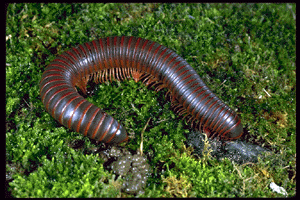 Millipede
Insects
1. Insects generally have three pairs of legs, one pair of antennae, and three body regions.
2. Insects mate once, or most only a few times, during their lifetime. The eggs are fertilized internally, and shells form around them. Many female insects are equipped with an appendage that is modified for digging a hole below the surface of the ground or in wood.
3. Growing inswccts undergo a series of changes in body structure as they develop. This series of changes, controlled by chemical substances in the animal, is called metamorphosis. Most insects go through four stages on their way to adulthood egg, larva, pupa, and adult.
4. During complete metamorphosis, an insect undrgoes a series of developmental changes from egg to adult.
Millipede
Insects
1. Insects generally have three pairs of legs, one pair of antennae, and three body regions.
2. Insects mate once, or most only a few times, during their lifetime. The eggs are fertilized internally, and shells form around them. Many female insects are equipped with an appendage that is modified for digging a hole below the surface of the ground or in wood.
3. Growing inswccts undergo a series of changes in body structure as they develop. This series of changes, controlled by chemical substances in the animal, is called metamorphosis. Most insects go through four stages on their way to adulthood egg, larva, pupa, and adult.
4. During complete metamorphosis, an insect undrgoes a series of developmental changes from egg to adult.
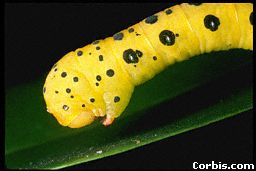 Insect
Echnioderms
1. Echnioderms have an number of unusual characteristics that easily distinguish them from member of any other phylum. .
2. If you were to examine the skin of several different echnioderms, you would find that they all have a hard, spiny, or bumpy endoskeleton covered by a thin epidermis. The long, pointed spines on a sea urchin are obvious. Some starfishes may not appear spiny at first glance, but a close look reveals that their long, tapering arms, called ray, are covered with short, round spines.
3. Another characteristic unique to echnioderms is teh system that enanles them to move, exchange gases, capture food, and excrete wastes. Look at the close up of the ventral side of a starfish.
4. Tube feet enable starfishes and other echnioderms to creep along the ocean bottom or to pry open the shells of bivalves. The tube feet attach to the two halves of the shell by suction, and the starfish pulls open the shell just enough to insert its stomach.
Insect
Echnioderms
1. Echnioderms have an number of unusual characteristics that easily distinguish them from member of any other phylum. .
2. If you were to examine the skin of several different echnioderms, you would find that they all have a hard, spiny, or bumpy endoskeleton covered by a thin epidermis. The long, pointed spines on a sea urchin are obvious. Some starfishes may not appear spiny at first glance, but a close look reveals that their long, tapering arms, called ray, are covered with short, round spines.
3. Another characteristic unique to echnioderms is teh system that enanles them to move, exchange gases, capture food, and excrete wastes. Look at the close up of the ventral side of a starfish.
4. Tube feet enable starfishes and other echnioderms to creep along the ocean bottom or to pry open the shells of bivalves. The tube feet attach to the two halves of the shell by suction, and the starfish pulls open the shell just enough to insert its stomach.
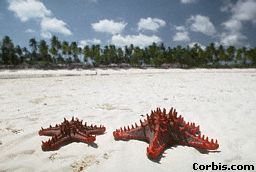 Echnioderm-Star Fish
Echnioderm-Star Fish
Fish
1. Fishes inhabit nearly every type of aquatic environment on Earth. Theya re adaptedto living in shallow, warm water and deeper cold and sunless water. They found is salt water, and some fishes can survive heavily polluted water.
2. In most bony fishes, sexes are separate and fertilization is external. Breeding in fishes and some other animal called spawning. During spawing, some female bony fishes, such as cod, produce as many as 9 million egs, or which only as small percentage will survive.
3. When fishes swim past obstacles, pressure changes occur in the water. Fishes can detect these minute changes of pressure with their lateral lines. The lateral line sysem enables a fish to swim in the dark and to navigate in a complex coral reef.
4. Scale are covered with slippery mucuz, allowing a fish to move through water with minimal friction. Fishes in the class Agnatha do not have scales.
 Fish
Fish
Flatworms
1. Worms have more complex structures than do sponges and cnidarians, but the least complex worms belong to the phylum Platyhelminthesis. These flatworms are acoelomates with thin, solid bodies.
2. Most species of flatworms are carnivorous and free-living, in aquatic or moist terrestrial habitats, although a few are external or internal commensals (living off a host but doing no apparent harm) or truly parasitic, usually in arthropods, mollusks, or echinoderms.
3. Bilateral symmetry. (2) Cephalization (head that contains brain and sense organs). (3) Organization of tissue derived directly from ectoderm, mesoderm, and endoderm into organ systems with the exception of circulatory systems.
4. Turbellarians have a ciliated epidermis and special cells that secrete mucus or produce rodlike bodies called rhabdites used for defense or capturing food. They are unsegmented and have solid connective tissue filling the spaces between their organs.
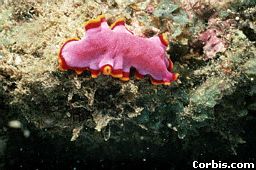 Flatworm
Flatworm
Reptile
1. any member of the class Reptilia, a group of air-breathing vertebrates that have internal fertilization and scaly bodies rather than hair or feathers.
2. They occupy an intermediate position in evolutionary development between amphibians and warm-blooded vertebrates, the birds and mammals.
3. Reptiles include the snakes, lizards, crocodiles and alligators, turtles.
4. And tuatara, among the living forms, and a great many extinct types such as dinosaurs, pterosaurs, and ichthyosaurs.
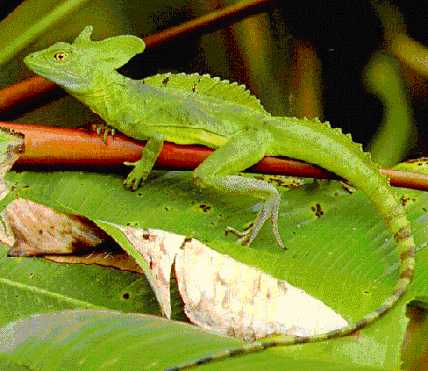 Reptile
Reptile
 InDeX
InDeX
TOP

 Centipedes &
Millipedes &
Insects &
Echnioderms &
Fish &
Flatworms
Reptile
Centipedes &
Millipedes &
Insects &
Echnioderms &
Fish &
Flatworms
Reptile







 InDeX
InDeX